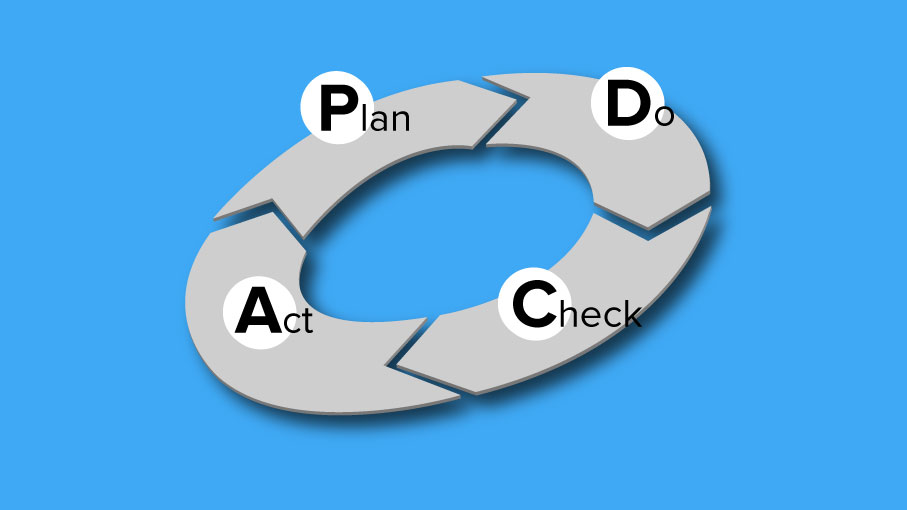Kaizen can be one of your greatest allies in workplace safety programs. Low-cost processes of continuous improvement are being implemented successfully by thousands of organizations around the world. These processes feature drastic increases in productivity, reductions in inventories and in the surface area occupied within the organization, and increases in production volumes that are proportionate to market demand. These are just a few of the results being achieved by organizations that adopt the kaizen philosophy that is being implemented by thousands of businesses around the world.
The Japanese term kaizen (meaning “change for the better”) was coined by Masaaki Imai in 1986 to describe the company philosophy that had been driving the success of Japanese industry, and of Toyota in particular, in the 1980s.
Kaizen as a business practice refers to the efficiency of production by developing management systems that aim to contain production costs and includes concepts such as lean production, inventory reduction, and the constant reintegration of raw materials and semi-finished goods (i.e. the kanban method).
The goal is to achieve ongoing improvement in manufacturing, engineering, and business management by way of a strategy of small, daily steps and by encouraging small changes, the overall effect of which becomes a selective process that improves the entire organization.
This philosophy does not only apply to production lines, but can lead to profound cultural change that affects decision-making processes and support systems, including the realm of company and industrial safety.
The method calls for slow, constant growth that involves the entire organization, as contrasted with the traditional idea of innovation as rapid, radical development that makes a complete break with the past.
Often in the west, we think that, when a process is working, we need to leave it as is and feel that it would be dangerous, and destabilizing, to make changes in any direction. Kaizen, on the other hand, is based on the assumption that it is not only that which contains errors or is functioning poorly that needs to be improved, but rather we must seek creative ways to perfect and to simplify.
One of the most important kaizen tools for reducing waste (muda in the Japanese) is the “5S” method—i.e. Sort (seiri), Set in order (or “straighten”, seiton), Shine (seiso), Standardize (seiketsu), and Sustain (shitsuke). The 5S methodology encapsulates, in just five steps, the systematic, repeatable model for optimizing standards and improving the performance of operations.
How kaizen applies to safety
Organizations need to ensure that recommendations and preventive measures in the area of workplace safety are implemented in a timely manner. It is here that the kaizen approach can be of great help. A kaizen process that implements safety solutions efficiently and as free from waste as possible calls for four steps.
Opportunity
First of all, a safety team established in line with kaizen principles must assess the situation of a given area of the organization in order to describe the opportunities for improvement. After examining the reports from the studies of incidents and injuries, the team must look at where the work is being done in order to have first-hand understanding of the current conditions. This can be achieved by conducting safety audits in line with Occupational Safety and Health Administration (OSHA) standards, making observations and interviews, or filming the process in order to identify hazards, such as poorly positioned fire extinguishers or exits, missing labels on containers, ergonomic risks, or disarray in the workplace.
Team
The team is typically made up of six to eight people. Each member of the team must be chosen for a precise purpose and be an effective problem solver. The workers in the kaizen area, as well as workers in areas before and after the area selected, should also be included, because these creates a wide range of ownership. The ability to add someone to the team who is able to provide a new point of view can help to challenge existing paradigms and ways of doing things that can result in hazardous conditions.
Objectives
The team must then set objectives and gather the underlying data. The safety objectives for each area should be assigned by senior management. Under the guidance of management, the team should tie the kaizen objectives to those of the area being assessed. For example, if the objective is to reduce the cases of medical intervention to a certain percentage, improvements such as the 5S approach and standard ergonomic procedures should be tied to this general objective. The ability to specify the type of injury and the amount of reduction expected will provide a metric for evaluation that can be documented on the sheet of kaizen objectives and in the safety metrics.
Responsibilities
Finally, management and the kaizen team leaders need to set clear responsibilities for the members of the team. This is done by creating a kaizen checklist that describes the problem, the countermeasures, the responsibilities of the team members, the deadlines, progress indicators, and completion dates.
Therefore, the value of kaizen practices is that of providing a systematic approach that leads to rapid, measurable improvement at a low cost point. One of the best ways to engage workers and make them feel accountable is to promote the creation of a workplace that is safe for everyone. It takes quality training to ensure that this is done effectively. Training in occupational health and safety within the context of kaizen calls for this training to engage workers in both directions, i.e. as beneficiaries of the training and as sources of ideas and experience. Engaging your workforce in a constant commitment to creating a safe workplace makes it possible to seize a great many opportunities for continuous improvement.


